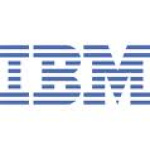- Industry: Computer
- Number of terms: 98482
- Number of blossaries: 0
- Company Profile:
Sometimes referred to as “Big Blue” IBM is a multinational corporation headquartered in Armonk, New York. It manufactures computer hardware and software and provides information technology and services.
(1) A character string attached to the end of a file name that helps identify its file type.<br />(2) A distinguished name that identifies the top entry in a locally held directory hierarchy. Because of the relative naming scheme used in Lightweight Directory Access Protocol (LDAP), this suffix applies to every other entry within that directory hierarchy. A directory server can have multiple suffixes, each identifying a locally held directory hierarchy.
Industry:Software
(1) A generic term for the object type that refers to a database file, a device file, or a save file. The system-recognized identifier for the object type is *FILE.<br />(2) A collection of related data that is stored and retrieved by an assigned name. See also data set.
Industry:Software
(1) A graphic symbol whose appearance conveys information, for example, the vertical and horizontal arrows on cursor keys that indicate the directions in which they control cursor movement.<br />(2) An image, usually of a character, in a font. See also character, graphic character.
Industry:Software
(1) A set of individual components, such as people, machines, or methods, that work together to perform a function.<br />(2) A computer and its associated devices and programs.<br />(3) A single node or a cluster of nodes acting as a single computing entity. A system in this sense may run multiple instances of the operating system. See also cluster node.<br />(4) A functional unit, consisting of one or more computers and associated software, that uses common storage for all or part of a program and also for all or part of the data necessary for the execution of the program. A system can be a stand-alone unit, or it can consist of multiple connected units.
Industry:Software
(1) A set of pointers that is logically ordered by the values of a key. Indexes provide quick access to data and can enforce uniqueness of the key values for the rows in the table.<br />(2) A computer storage position or register, the contents of which identify a particular element in a table.<br />(3) In VisualAge RPG, the identifier of an entry in a part, such as a list box or a combination box.<br />(4) A table that contains key values or referrences for locating information in an indexed file.<br />(5) In the WebSphere MQ Administration Interface (MQAI), a means of referencing data items.<br />(6) A relative number (1-64) of an image catalog entry within an image catalog.<br />(7) A list of entries arranged alphabetically to provide fast access to information.<br />(8) To add or edit the attribute values that identify a specific item or object so that it can be retrieved later.
Industry:Software
(1) A set of rules controlling the communication and transfer of data between two or more devices or systems in a communication network.<br />(2) In OSI, a specification of the format and relative timing of information exchanged between peer entities within a layer.
Industry:Software
(1) A set of statements in a program that causes the system to perform an operation or a series of related operations.<br />(2) In REXX, a series of instructions called with the CALL instruction or as a function. A routine can be either internal or external to a user's program.<br />(3) A program or sequence of instructions called by a program. Typically, a routine has a general purpose and is frequently used.<br />(4) A database object that can encapsulate procedural logic and SQL statements, is stored on a database server, and can be invoked using an SQL statement such as the CALL statement. The three main classes of routines are procedures, functions, and methods. See also aggregate function, built-in function, external routine, function, scalar function, sourced function, SQL routine, table function, user-defined function, SQL function, row function, SQL procedure, method, SQL method, procedure.
Industry:Software
(1) A set of tables that can be ordered so that each table is a descendent of the one before it, and the first table is a descendent of the last table. A self-referencing table is a cycle with a single member. See also referential cycle.<br />(2) To end a management collection object that is currently in use and to open a new object for storing future collections. This process prevents collection objects from becoming too large.
Industry:Software
(1) A setting that defines the assigned processing capacity represented to the operating system. Virtual processors represent a processing capacity less than that of a physical processor. A logical partition in the shared processor pool must have at least as many virtual processors as its assigned processing capacity.<br />(2) The defined processing capacity assigned to an uncapped partition as represented to the operating system.
Industry:Software
(1) A hierarchical arrangement of organizational units, such that each user is included once and only once.<br />(2) An entity where people cooperate to accomplish specified objectives, such as an enterprise, a company, or a factory.
Industry:Software
